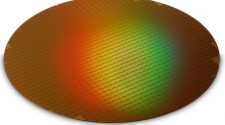8.9.0.3
Preface
Many professions require some form of programming. Accountants program
spreadsheets; musicians program synthesizers; authors program word
processors; and web designers program style sheets. When we wrote these
words for the first edition of the book (1995–2000), readers may have considered
them futuristic; by now, programming has become a required skill and
numerous outlets—
need, always with the goal of enhancing people’s job prospects.
The typical course on programming teaches a “tinker until it works”
approach. When it works, students exclaim “It works!” and move on. Sadly,
this phrase is also the shortest lie in computing, and it has cost many
people many hours of their lives. In contrast, this book focuses on habits
of good programming, addressing both professional and vocational
programmers.
By “good programming,” we mean an approach to the creation of software
that relies on systematic thought, planning, and understanding from the
very beginning, at every stage, and for every step. To emphasize the
point, we speak of systematic program design and systematically
designed programs. Critically, the latter articulates the rationale
of the desired functionality. Good programming also satisfies an
aesthetic sense of accomplishment; the elegance of a good program is
comparable to time-tested poems or the black-and-white photographs of a
bygone era. In short, programming differs from good programming like
crayon sketches in a diner from oil paintings in a museum.
No, this book won’t turn anyone into a master painter. But, we would not
have spent fifteen years writing this edition if we didn’t believe that
everyone can design programs
and
everyone can experience the satisfaction that comes with creative design.
Indeed, we go even further and argue that
program design—
but not programming— deserves the same role in a liberal-arts education as mathematics and language skills.
A student of design who never touches a program again will still pick up
universally useful problem-solving skills, experience a deeply creative
activity, and learn to appreciate a new form of aesthetic. The rest of
this preface explains in detail what we mean with “systematic design,” who
benefits in what manner, and how we go about teaching it all.
Systematic Program Design
A program interacts with people, dubbed users, and other programs, in
which case we speak of server and client
components. Hence any reasonably complete program consists of many building
blocks: some deal with input, some create output, while some bridge the gap
between those two. We choose to use functions as fundamental building
blocks because everyone encounters functions in pre-algebra and because
the simplest programs are just such functions. The key is to discover
which functions are needed, how to connect them, and how to build them
from basic ingredients.
In this context, “systematic program design” refers to a mix of two
concepts: design recipes and iterative refinement.We drew
inspiration from Michael Jackson’s method for creating COBOL programs plus
conversations with Daniel Friedman on recursion, Robert Harper on type
theory, and Daniel Jackson on software design. The design recipes are a
creation of the authors, and here they enable the use of the latter.
From Problem Analysis to Data Definitions
Identify the information that must be represented and how it is
represented in the chosen programming language. Formulate data definitions
and illustrate them with examples.Signature, Purpose Statement, Header
State what kind of data the desired function consumes and
produces. Formulate a concise answer to the question what the
function computes. Define a stub that lives up to the signature.Functional Examples
Work through examples that illustrate the function’s purpose.
Function Template
Translate the data definitions into an outline of the function.
Function Definition
Fill in the gaps in the function template. Exploit the purpose
statement and the examples.Testing
Articulate the examples as tests and ensure that the function
passes all. Doing so discovers mistakes. Tests also supplement examples in
that they help others read and understand the definition when the need
arises—and it will arise for any serious program.
Design Recipes apply to both complete programs and individual
functions. This book deals with just two recipes for complete programs:
one for programs with a graphical user interface (GUI) and one for batch
programs. In contrast, design recipes for functions come in a wide variety
of flavors: for atomic forms of data such as numbers; for enumerations of
different kinds of data; for data that compounds other data in a fixed
manner; for finite but arbitrarily large data; and so on.
The function-level design recipes share a common design
process. Figure 1 displays its six essential
steps. The title of each step specifies the expected outcome(s); the
“commands” suggest the key activities. Examples play a central role at
almost every stage.Instructors Have students copy
figure 1 on one side of an index card. When
students are stuck, ask them to produce their card and point them to the
step where they are stuck. For the chosen data representation in step 1,
writing down examples proves how real-world information is encoded as data
and how data is interpreted as information. Step 3 says that a
problem-solver must work through concrete scenarios to gain an
understanding of what the desired function is expected to compute for
specific examples. This understanding is exploited in step 5, when it is
time to define the function. Finally, step 6 demands that examples are
turned into automated test code, which ensures that the function works
properly for some cases. Running the function on real-world data may
reveal other discrepancies between expectations and results.
Each step of the design process comes with pointed questions, which are introduced across the six parts of the book. For certain
steps—
questions may appeal to the data definition. The answers almost
automatically create an intermediate
product.Instructors The most important questions are
those for steps 4 and 5. Ask students to write down these questions in
their own words on the back of their index card. This scaffolding pays off
when it comes time to take the one creative step in the process: the
completion of the function definition. And even then, help is available in
almost all cases.
The novelty of this approach is the creation of intermediate products for
beginner-level programs. When a novice is stuck, an expert or an
instructor can inspect the existing intermediate products. The inspection
is likely to use the generic questions from the design process and thus
drive the novice to correct himself or herself. And this self-empowering
process is the key difference between programming and program design.
Iterative Refinement addresses the issue that problems are complex
and multifaceted. Getting everything right at once is nearly
impossible. Instead, computer scientists borrow iterative refinement from
the physical sciences to tackle this design problem. In essence, iterative
refinement recommends stripping away all inessential details at first and
finding a solution for the remaining core problem. A refinement step adds
in one of these omitted details and re-solves the expanded problem, using
the existing solution as much as possible. A repetition, also called an
iteration, of these refinement steps eventually leads to a complete
solution.
In this sense, a programmer is a miniscientist. Scientists create
approximate models for some idealized version of the world to make
predictions about it. As long as the model’s predictions come true,
everything is fine; when the predicted events differ from the actual ones,
scientists revise their models to reduce the discrepancy. In a similar
vein, when programmers are given a task, they create a first design, turn
it into code, evaluate it with actual users, and iteratively refine the
design until the program’s behavior closely matches the desired product.
This book introduces iterative refinement in two different ways. Since
designing via refinement becomes useful even when the design of programs becomes
complex, the book introduces the technique explicitly in the fourth part,
once the problems acquire a certain degree of difficulty. Furthermore, we
use iterative refinement to state increasingly complex variants of the
same problem over the course of the first three parts of the book. That
is, we pick a core problem, deal with it in one chapter, and then pose a
similar problem in a subsequent chapter—
introduced concepts.
DrRacket and the Teaching Languages
Learning to design programs calls for repeated hands-on practice. Just as
nobody becomes a piano player without playing the piano, nobody
becomes a program designer without creating actual programs and getting
them to work properly. Hence, our book comes with a modicum of software
support: a language in which to write down programs and a program
development environment with which programs are edited like word
documents and with which readers can run programs.
Many people we encounter tell us they wish they knew how to code and then
ask which programming language they should learn. Given the press
that some programming languages get, this question is not surprising. But
it is also wholly inappropriate.Instructors For
courses not aimed at beginners, it may be possible to use an off-the-shelf
language with the design recipes. Learning to program in a currently
fashionable programming language often sets up students for
eventual failure. Fashion in this world is extremely short lived. A typical
“quick programming in X” book or course fails to teach principles that
transfer to the next fashion language. Worse, the language itself often
distracts from the acquisition of transferable skills, at the level
of both expressing solutions and dealing with programming mistakes.
In contrast, learning to design programs is primarily about the study of
principles and the acquisition of transferable skills. The ideal
programming language must support these two goals, but no off-the-shelf
industrial language does so. The crucial problem is that beginners make
mistakes before they know much of the language, yet programming
languages always diagnose these errors as if the programmer already knew
the whole language. As a result, diagnosis reports often stump beginners.
Our solution is to start with our own tailor-made teaching language,
dubbed “Beginning Student Language” or BSL. The language is
essentially the “foreign” language that students acquire in pre-algebra
courses. It includes notation for function definitions, function
applications, and conditional expressions. Also, expressions can
beInstructors You may wish to explain that BSL is
pre-algebra with additional forms of data and a host of pre-defined
functions on those. nested. This language is thus so small that an error
diagnosis in terms of the whole language is still accessible to readers
with nothing but pre-algebra under their belt.
A student who has mastered the structural design principles can then move
on to “Intermediate Student Language” and other advanced dialects,
collectively dubbed *SL. The book uses these dialects to teach design
principles of abstraction and general recursion. We firmly believe that
using such a series of teaching languages provides readers with a superior
preparation for creating programs for the wide spectrum of
professional programming languages (JavaScript, Python, Ruby, Java, and
others).
Note The teaching languages are implemented in Racket, a
programming language we built for building programming languages. Racket
has escaped from the lab into the real world, and it is a programming
vehicle of choice in a variety of settings, from gaming to the control of
telescope arrays. Although the teaching languages borrow elements from the
Racket language, this book does not teach Racket. Then again, a
student who has completed this book can easily move on to
Racket. End
When it comes to programming environments, we face an equally bad choice as
the one for languages. A programming environment for professionals is
analogous to the cockpit of a jumbo jet. It has numerous controls and
displays, overwhelming anyone who first launches such a software
application. Novice programmers need the equivalent of a two-seat,
single-engine propeller aircraft with which they can practice basic
skills. We have therefore created DrRacket, a programming environment for
novices.
DrRacket supports highly playful, feedback-oriented learning with just two
simple interactive panes: a definitions area, which contains function
definitions, and an interactions area, which allows a programmer to ask
for the evaluation of expressions that may refer to the definitions. In
this context, it is as easy to explore “what if” scenarios as in a
spreadsheet application. Experimentation can start on first contact, using
conventional calculator-style examples and quickly proceeding to
calculations with images, words, and other forms of data.
An interactive program development environment such as DrRacket simplifies the
learning process in two ways. First, it enables novice programmers to
manipulate data directly. Because no facilities for reading input
information from files or devices are needed, novices don’t need to spend
valuable time on figuring out how these work. Second, the arrangement
strictly separates data and data manipulation from input and output of
information from the “real world.” Nowadays this separation is
considered so fundamental to the systematic design of software that it
has its own name: model-view-controller architecture. By
working in DrRacket, new programmers are exposed to this fundamental
software engineering idea in a natural way from the get-go.
Skills that Transfer
The skills acquired from learning to design programs systematically
transfer in two directions. Naturally, they apply to programming in general
as well as to programming spreadsheets, synthesizers, style sheets, and even word
processors. Our observations suggest that the design process from
figure 1 carries over to almost any programming
language, and it works for 10-line programs as well as for 10,000-line
programs. It takes some reflection to adopt the design process across the
spectrum of languages and scale of programming problems; but once the
process becomes second nature, its use pays off in many ways.
Learning to design programs also means acquiring two kinds of universally
useful skills. Program design certainly teaches the same analytical skills
as mathematics, especially (pre)algebra and geometry. But, unlike
mathematics, working with programs is an active approach to
learning. Creating software provides immediate feedback and thus leads to
exploration, experimentation, and self-evaluation. The results tend to be
interactive products, an approach that vastly increases the sense of accomplishment
when compared to drill exercises in textbooks.
In addition to enhancing a student’s mathematical skills, program design
teaches analytical reading and writing skills. Even the smallest design
tasks are formulated as word problems. Without solid reading and comprehension skills, it
is impossible to design programs that solve a reasonably complex
problem. Conversely, program design methods force a creator to articulate
his or her thoughts in proper and precise language. Indeed, if students
truly absorb the design recipe, they enhance their articulation skills more than
anything else.
figure 1. It says that a designer must
-
analyze a problem statement, typically stated as a word problem;
-
extract and express its essence, abstractly;
-
illustrate the essence with examples;
-
make outlines and plans based on this analysis;
-
evaluate results with respect to expected outcomes; and
-
revise the product in light of failed checks and tests.
Each step requires analysis, precision, description, focus, and attention
to details. Any experienced entrepreneur, engineer, journalist,
lawyer, scientist, or any other professional can explain how many of
these skills are necessary for his or her daily work. Practicing program
design—
Similarly, refining designs is not restricted to computer science and
program creation. Architects, composers, writers, and other professionals
do it, too. They start with ideas in their head and somehow articulate
their essence. They refine these ideas on paper until their product
reflects their mental image as much as possible. As they bring their ideas
to paper, they employ skills analogous to fully absorbed design recipes:
drawing, writing, or piano playing to express certain style elements of a
building, describe a person’s character, or formulate portions of a
melody. What makes them productive with an iterative development process
is that they have absorbed their basic design recipes and learned how to
choose which one to use for the current situation.
This Book and Its Parts
The purpose of this book is to introduce readers without prior experience
to the systematic design of programs. In tandem, it presents a
symbolic view of computation, a method that explains how the
application of a program to data works. Roughly speaking, this method
generalizes what students learn in elementary school arithmetic and middle
school algebra. But have no fear. DrRacket comes with a mechanism—
algebraic stepper—
The book consists of six parts separated by five intermezzos and is bookended
by a Prologue and an Epilogue. While the major parts focus on program
design, the intermezzos introduce supplementary concepts concerning
programming mechanics and computing.
explains how to write a simple animation in *SL. Once finished, any
beginner is bound to feel simultaneously empowered and overwhelmed. The
final note therefore explains why plain programming is wrong and how a
systematic, gradual approach to program design eliminates the sense
of dread that every beginning programmer usually experiences. Now the
stage is set for the core of the book:
-
Fixed-Size Data explains the most fundamental concepts of
systematic design using simple examples. The central idea is that
designers typically have a rough idea of what data the program is supposed
to consume and produce. A systematic approach to design must therefore
extract as many hints as possible from the description of the data that
flows into and out of a program. To keep things simple, this part starts
with atomic data—numbers, images, and so on— and then gradually
introduces new ways of describing data: intervals, enumerations,
itemizations, structures, and combinations of these. -
Intermezzo 1: Beginning Student Language describes the teaching language in complete detail: its
vocabulary, its grammar, and its meaning. Computer scientists refer to these
as syntax and semantics. Program designers use this model of computation
to predict what their creations compute when run or to analyze error
diagnostics. -
Arbitrarily Large Data extends Fixed-Size Data with the means to
describe the most interesting and useful forms of data: arbitrarily large
compound data. While a programmer may nest the kinds of data from
Fixed-Size Data to represent information, the nesting is always of a
fixed depth and breadth. This part shows how a subtle generalization gets
us from there to data of arbitrary size. The focus then switches to the
systematic design of programs that process this kind of data. -
Intermezzo 2: Quote, Unquote introduces a concise and powerful notation for writing
down large pieces of data: quotation and anti-quotation. -
Abstraction acknowledges that many of the functions from
Arbitrarily Large Data look alike. No programming language should force
programmers to create pieces of code that are so similar to each other.
Conversely, every good programming language comes with ways to eliminate
such similarities. Computer scientists call both the step of eliminating
similarities and its result abstraction, and they know that
abstractions greatly increase a programmer’s productivity. Hence, this
part introduces design recipes for creating and using abstractions. -
Intermezzo 3: Scope and Abstraction plays two roles. On the one hand, it injects the concept of
lexical scope, the idea that a programming language ties every
occurrence of a name to a definition that a programmer can find with an
inspection of the code. On the other hand, it explains a teachpack with
additional mechanisms for abstraction, including so-called for loops. -
Intertwined Data generalizes Arbitrarily Large Data and explicitly
introduces the idea of iterative refinement into the catalog of design
concepts. -
Intermezzo 4: The Nature of Numbers explains and illustrates why decimal numbers work in
such strange ways in all programming languages. Every budding programmer
ought to know these basic facts. -
Generative Recursion adds a new design principle. While
structural design and abstraction suffice for most problems that
programmers encounter, they occasionally lead to insufficiently
“performant” programs. That is, structurally designed programs
might need too much time or energy to compute the desired
answers. Computer scientists therefore replace structurally designed
programs with programs that benefit from ad hoc insights into the problem
domain. This part of the book shows how to design a large class of just
such programs. -
Intermezzo 5: The Cost of Computation uses examples from Generative Recursion to illustrate how
computer scientists think about performance. -
Accumulators adds one final trick to the toolbox of designers:
accumulators. Roughly speaking, an accumulator adds “memory” to a
function. The addition of memory greatly improves the performance of
structurally designed functions from the first four parts of the book. For
the ad hoc programs from Generative Recursion, accumulators can make the
difference between finding an answer and never finding one.
Independent readers ought to work through the entire book, from the first
page to the last. We say “work” because we really mean that a reader
ought to solve all exercises or at least know how to solve them.
Similarly, instructors ought to cover as many elements as possible,
starting from the Prologue all the way through the Epilogue. Our teaching
experience suggests that this is doable. Typically, we organize our courses
so that our readers create a sizable and entertaining program over the
course of the semester. We understand, however, that some circumstances
call for significant cuts and that some instructors’ tastes call for
slightly different ways to use the book.
Figure 2 is a navigation chart for those who wish to
pick and choose from the elements of the book. The figure is a dependency
graph. A solid arrow from one element to another suggests a mandatory
ordering; for example, Part II requires an understanding of Part I. In
contrast, a dotted arrow is mostly a suggestion; for example,
understanding the Prologue is unnecessary to get through the rest of the
book.
Based on this chart, here are three feasible paths through the book:
Iteration of Sample Topics The book revisits certain exercise and
sample topics time and again. For example, virtual pets are found all over
Fixed-Size Data and even show up in Arbitrarily Large Data. Similarly, both
Fixed-Size Data and Arbitrarily Large Data cover alternative approaches to
implementing an interactive text editor. Graphs appear in
Generative Recursion and immediately again in Accumulators. The purpose
of these iterations is to motivate iterative refinement and to introduce
it through the backdoor. We urge instructors to assign these themed
sequences of exercises or to create their own such sequences.
The Differences
This second edition of How to Design Programs differs from the first
one in several major aspects:
-
It explicitly acknowledges the difference between
designing a whole program and the functions that make up a
program. Specifically, this edition focuses on two kinds of programs:
event-driven (mostly GUI, but also networking) programs and batch programs. -
The design of a program proceeds in a top-down planning phase
followed by a bottom-up construction phase. We explicitly show how the
interface to libraries dictates the shape of certain program elements. In
particular, the very first phase of a program design yields a wish list of
functions. While the concept of a wish list exists in the first edition,
this second edition treats it as an explicit design element. -
Fulfilling an entry from the wish list relies on the function
design recipe, which is the subject of the six major parts. -
A key element of structural design is the definition of functions
that compose others. This design-by-composition is especially useful for
the world of batch programs. Like generative recursion,We
thank Kathi Fisler for calling our attention to this point. it requires a
eureka!, specifically a recognition that the creation of
intermediate data by one function and processing this intermediate result
by a second function simplifies the overall design. This approach also
needs a wish list, but formulating these wishes calls for an insightful
development of an intermediate data definition. This edition of the book
weaves in a number of explicit exercises on design by composition. -
While testing has always been a part of our design philosophy, the
teaching languages and DrRacket started supporting it properly only in 2002,
just after we had released the first edition. This new edition heavily
relies on this testing support. -
This edition of the book drops the design of imperative programs. The
old chapters remain available on-line. An adaptation of this material will
appear in the second volume of this series, How to Design Components. -
The book’s examples and exercises employ new teachpacks. The
preferred style is to link in these teachpacks via
require, but it is still possible to add
teachpacks via a menu in DrRacket. -
Finally, this second edition differs from the first in a few aspects
of terminology and notation:Second Edition
First Edition
signature
contract
itemization
union
‘()
empty
#true
true
#false
false
The last three differences greatly improve quotation for lists.
Acknowledgments from the First Edition
Four people deserve special thanks: Robert “Corky” Cartwright, who
co-developed a predecessor of Rice University’s introductory course with the first
author; Daniel P. Friedman, for asking the first author to rewrite
The Little LISPer (also MIT Press) in 1984, because it started this
project; John Clements, who designed, implemented, and maintains DrRacket’s
stepper; and Paul Steckler, who faithfully supported the team with
contributions to our suite of programming tools.
The development of the book benefited from many other friends and
colleagues who used it in courses and/or gave detailed comments on
early drafts. We are grateful to them for their help and patience:
Ian Barland,
John Clements,
Bruce Duba,
Mike Ernst,
Kathi Fisler,
Daniel P. Friedman,
John Greiner,
Géraldine Morin,
John Stone,
and
Valdemar Tamez.
A dozen generations of Comp 210 students at Rice used
early drafts of the text and contributed improvements in various
ways. In addition, numerous attendees of our TeachScheme! workshops used early
drafts in their classrooms. Many sent in comments and
suggestions. As representative of these we mention the following active
contributors:
Ms. Barbara Adler,
Dr. Stephen Bloch,
Ms. Karen Buras,
Mr. Jack Clay,
Dr. Richard Clemens,
Mr. Kyle Gillette,
Mr. Marvin Hernandez,
Mr. Michael Hunt,
Ms. Karen North,
Mr. Jamie Raymond,
and
Mr. Robert Reid.
Christopher Felleisen patiently worked through the first few parts of
the book with his father and provided direct insight into the views of a
young student.
Hrvoje Blazevic (sailing, at the time, as Master of the LPG/C Harriette),
Joe Zachary (University of
Utah), and Daniel P. Friedman (Indiana University) discovered numerous
typos in the first printing, which we have now fixed.
Thank you to everyone.
Finally, Matthias expresses his gratitude to Helga for her many years of
patience and for creating a home for an absent-minded husband and
father. Robby is grateful to Hsing-Huei Huang for her support and
encouragement; without her, he would not have gotten anything
done. Matthew thanks Wen Yuan for her constant support and enduring music.
Shriram is indebted to Kathi Fisler for support, patience and puns, and for
her participation in this project.
Acknowledgments
As in 2001, we are grateful to John Clements for designing, validating,
implementing, and maintaining DrRacket’s algebraic stepper. He has done so for
nearly 20 years now, and the stepper has become an indispensable tool of
explanation and instruction.
Over the past few years, several colleagues have commented on the various
drafts and suggested improvements. We gratefully acknowledge the thoughtful
conversations and exchanges with these individuals:
Kathi Fisler (WPI and Brown University), Gregor Kiczales (University of
British Columbia), Prabhakar Ragde (University of Waterloo), and Norman
Ramsey (Tufts University).
Thousands of teachers and instructors attended our various workshops over
the years, and many provided valuable feedback. But Dan Anderson, Stephen
Bloch, Jack Clay, Nadeem Abdul Hamid, and Viera Proulx stand out, and we
wish to call out their role in the crafting of this edition.
Guillaume Marceau, working with Kathi Fisler and Shriram, spent many months
studying and improving the error messages in DrRacket. We are grateful for his
amazing work.
Celeste Hollenbeck is the most amazing reader ever. She never tired of
pushing back until she understood the prose. She never stopped until a
section supported its thesis, its organization matched, and its sentences
connected. Thank you very much for your incredible efforts.
We also thank the following: Ennas Abdussalam, Mark Aldrich, Mehmet Akif Akkus, Anisa Anuar, Christoph Badura, Franco Barbeite,
Saad Bashir, Aaron Bauman, Suzanne Becker, Michael Bausch, Steven Belknap,
Stephen Bloch, Elijah Botkin, Joseph Bogart, Sergey Bronnikov, William Brown,
Tomas Cabrera, Xuyuqun C, Colin Caine, Anthony Carrico, Rodolfo Carvalho,
Estevo Castro, Maria Chacon,
Stephen Chang, David Chatman, Burleigh Chariton, Ni ChenYu, Tung Cheng, Nelson Chiu, Tomasz Chrzczonowicz,
Jack Clay, Richard Cleis,
John Clements, Scott Crymble, Pierce Darragh, Jonas Decraecker, Qu Dongfang, Dominique Dijkhuizen,
Mark Engelberg, Thomas Evans, Andrew Fallows, Jiankun Fan, Christopher Felleisen, Sebastian Felleisen,
Vladimir Gajić, Xin Gao,
Adrian German, Jack Gitelson, Kyle Gillette, Jonathan Gordon, Scott Greene, Ben Greenman,
Ryan Golbeck, Josh Grams, Grigorios,
Jane Griscti, Alberto E. F. Guerrero, Tyler Hammond, Nan Halberg, Li Junsong,
Nadeem Abdul Hamid, Jeremy Hanlon, Tony Henk, Craig Holbrook, Connor Hetzler, Benjamin Hosseinzahl,
Wayne Iba,
John Jackaman, Jordan Johnson, Blake Johnson, Erwin Junge,
Marc Kaufmann, Cole Kendrick,
Gregor Kiczales,
Eugene Kohlbecker, Jaroslaw Kolosowski, Caitlin Kramer, Roman Kunin,
Jackson Lawler, Devon LePage,
Ben Lerner, Shicheng Li, Chen Lj, Ed Maphis, YuSheng Mei, Andres Meza, Saad Mhmood,
Elena Machkasova, Jay Martin, Alexander Martinez, Yury Mashika,
Jay McCarthy, James McDonell, Mike McHugh, Wade McReynolds, David Moses,
Ann E. Moskol, Naveen M V, Scott Newson, , Štěpán Němec,
Paul Ojanen, Prof. Robert Ordóñez, Laurent Orseau,
Klaus Ostermann,
Alanna Pasco, Sinan Pehlivanoglu, Eric Parker, Nico Niemikko,
David Porter, Nick Pleatsikas, Prathyush Pramod, Alok Rai,
Norman Ramsey, Krishnan Ravikumar, Jacob Rubin, Ilnar Salimzianov, Luis Sanjuán,
Brian Schack, Ryan “Havvy” Scheel, Lisa Scheuing, Willi Schiegel, Vinit Shah, Nick Shelley, Edward Shen,
Tubo Shi, Hyeyoung Shin, Atharva Shukla, Matthew Singer,
Michael Siegel, Stephen Siegel, Milton Silva,
Kartik Singhal, Joe Snikeris,
Marc Smith, Matthijs Smith,
Dave Smylie, Woncheol Song,
Vincent St-Amour, Reed Stevens, William Stevenson, Kevin Sullivan, Yuriy Syrovetskiy, Asumu Takikawa,
Éric Tanter,
Sam Tobin-Hochstadt, Thanos Tsouanas, Aaron Tsay, Mariska Twaalfhoven, Bor Gonzalez Usach, Ricardo Ruy Valle-mena,
Manuel del Valle,
David Van Horn, Nick Vaughn, Simeon Veldstra, Andre Venter, Jan Vitek, Marco Villotta,
Mitch Wand, Yuxu (Ewen) Wang, Michael Wijaya, G. Clifford Williams, Ewan Whittaker-Walker, Julia Wlochowski,
Roelof Wobben, J.T. Wright, Mardin Yadegar, Huang Yichao, Yuwang Yin,
Andrew Zipperer, Ari Zvi for comments on drafts of this second edition.
The HTML layout at htdp.org is the work of Matthew Butterick, who
created these styles for our on-line documentation.
Finally, we are grateful to Ada Brunstein and Marie Lufkin Lee, our editors
at MIT Press, who gave us permission to develop this second edition of
How to Design Programs on the web. We also thank MIT’s Christine
Bridget Savage and John Hoey from Westchester Publishing Services for
managing the final production process. John Donohue, Jennifer Robertson, and Mark
Woodworth did a wonderful job of copy editing the manuscript.

















